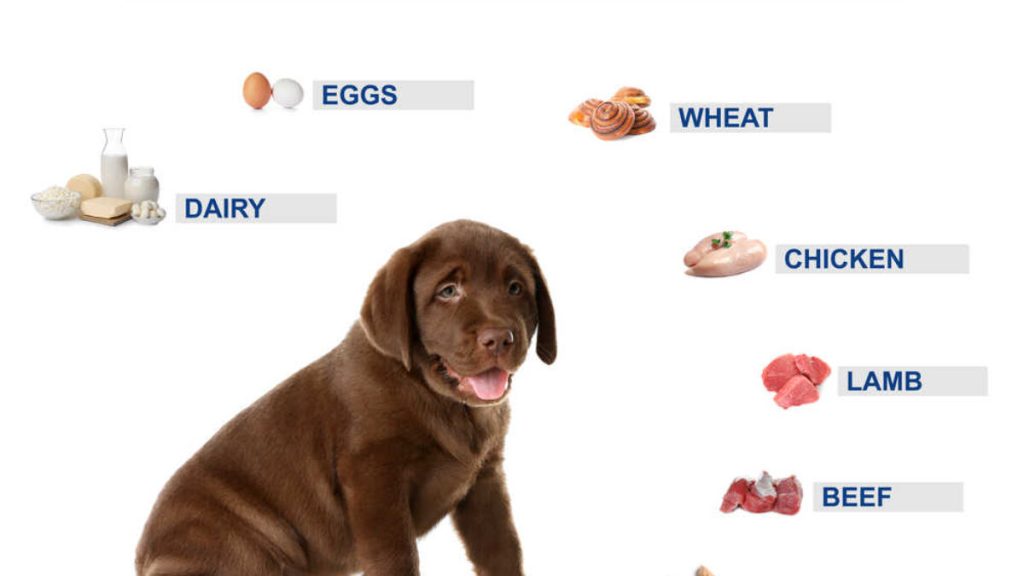How to Identify Food Allergies in Pets: Signs and Solutions

The Joys and Challenges of Pet Ownership
Owning a pet brings a wealth of happiness into a home, but it also comes with its fair share of challenges. Among these challenges, one pressing issue that pet owners may encounter is food allergies. The growing prevalence of these allergies has made it essential for pet owners to be vigilant in recognizing the symptoms, understanding their pet’s diet, and ultimately seeking solutions.
Identifying Symptoms of Food Allergies
The signs of food allergies in pets are varied and can sometimes be subtle, which can lead to delayed identification. Common symptoms include:
- Itching and scratching: Pets may scratch excessively or chew on their paws, leading to bald patches or skin infections.
- Digestive issues: These may manifest as frequent diarrhea, vomiting, or even a change in appetite, indicating that your pet’s body is reacting negatively to certain foods.
- Ear infections: Pets suffering from food allergies may experience recurrent ear infections, leading to discomfort that can often be mistaken for regular ear issues.
- Skin irritations or redness: Rashes, bumps, or inflamed skin are often visible signs of an allergic reaction, and they can indicate the need for dietary adjustments.
Common Triggers for Food Allergies
The complexity of food allergies lies in identifying which specific ingredient is causing the allergic response. Pets can develop allergies to:
- Common proteins: Ingredients like chicken and beef are frequent culprits, causing discomfort in many pets. For instance, a pet that previously enjoyed chicken might suddenly develop an aversion due to a newly developed allergy.
- Grains: Some pets struggle to digest grains like wheat and corn, which can lead to gastrointestinal issues.
- Lactose: Many pets show sensitivity to milk and dairy products, leading to diarrhea and other digestive challenges.
In Nigeria, where the dietary habits of pets can vary significantly based on local customs and available food sources, understanding these allergens is crucial. For example, some local foods that include fish or yam may be less likely to provoke allergies compared to commercial brands filled with common allergens.
Steps to Take for Better Health
To effectively address food allergies in pets, owners can adopt several practical methods for identification and management. Keeping a food diary can be an excellent first step; recording everything your pet consumes will help you track potential triggers. Involving a veterinarian early in the process is equally important, as they can provide guidance on diagnostic testing and recommend tailored diets.

Additionally, consider exploring hypoallergenic pet food formulated to exclude typical allergens. These diets are designed to minimize allergic reactions and can make a significant difference in your pet’s health. Further, educating yourself on food labels and understanding the ingredients can empower you in making informed decisions about your pet’s diet.
Ultimately, recognition and understanding of food allergies in pets not only lead to better health for these beloved companions but also foster a more rewarding pet ownership experience. Stay informed, consult with professionals, and take an active role in your pet’s dietary needs to ensure many happy moments together.
SEE ALSO: Click here to read another article
Recognizing the Signs of Food Allergies
Understanding food allergies in pets begins with the ability to recognize and interpret the signs and symptoms that your beloved companion may exhibit. These reactions often arise when an animal’s immune system mistakenly identifies a particular food ingredient as a threat. As a responsible pet owner, it is crucial to be aware of the specific signs that could indicate your pet is struggling with food allergies.
The symptoms can vary widely between different animals and may often resemble other health issues, making accurate identification challenging. Generally, here are some of the most common signs to watch for:
- Persistent itching and scratching: If your pet finds itself scratching or biting at its skin more frequently, it could be a reaction to certain foods. Unlike regular itchiness, allergy-induced scratching often leads to noticeable changes in skin texture or coloration.
- Gastrointestinal disturbances: Pets with food allergies may experience constant digestive issues, such as diarrhea or vomiting. Keep an eye on your pet’s eating habits and bowel movements, as sudden changes can be indicative of an allergy.
- Ear and skin infections: Recurring ear infections or skin irritations may signal an underlying food allergy. If your dog or cat frequently shakes its head or scratches its ears, it may be worth investigating potential food triggers.
- Behavioral changes: Sometimes, food allergies can lead to lethargy or irritability in pets. If your usually vibrant pet seems withdrawn, a food allergy could be at play.
In Nigeria, where the availability and diversity of pet food vary, the prevalence of certain allergens may also differ. Local diets may include unique protein sources, such as goat meat or local fish, which could be unfamiliar to some pets, resulting in unexpected allergic reactions.
Understanding Common Allergenic Ingredients
Once you have identified potential signs of food allergies in your pet, the next step is to become familiar with the common allergenic ingredients that could be causing the issue. Understanding these allergens makes it easier for you to evaluate your pet’s diet and identify possible culprits. Some of the most common food allergens for pets include:
- Animal proteins: Chicken, beef, and lamb are often found in many commercial pet foods and are known to trigger allergies in some pets.
- Grains: Ingredients like wheat, corn, and soy can cause gastrointestinal distress and allergic reactions in sensitive animals.
- Dairy products: Lactose intolerance is common among pets, with many unable to digest milk and dairy, resulting in digestive upset.
Identifying specific allergens may take time and observation. Owners should maintain an open dialogue with their veterinarians, as veterinary guidance is invaluable in diagnosing and managing food allergies. Equally important, switching your pet’s diet should be done gradually to avoid further gastrointestinal issues.
The next crucial step in managing food allergies in pets is understanding the common signs that may indicate an allergic reaction. Awareness of these signs can help pet owners act swiftly and seek veterinary help when necessary. The most prevalent symptoms include:
- Itchy skin and paws: Pets experiencing allergies often exhibit excessive scratching and licking, particularly around the paws, ears, and belly.
- Gastrointestinal upset: Many pets show signs of food allergies through vomiting, diarrhea, or flatulence. Such symptoms can signal an intolerance to specific ingredients.
- Ear infections: Recurrent ear infections or inflammation can be a sign of underlying allergies, often leading to discomfort for the pet.
- Skin infections: Allergies can cause skin irritation that fosters secondary bacterial or yeast infections.
Early detection of these symptoms not only improves the quality of life for your pet but also helps prevent severe health complications. If you notice any of these signs, consult your veterinarian to discuss potential allergy tests and dietary adjustments.
Once food allergies are confirmed, it’s essential to establish an elimination diet. This involves removing common allergens from your pet’s diet and gradually reintroducing them to identify the culprit. Key allergens often include:
- Beef
- Dairy
- Chicken
- Wheat
- Fish
The reintroduction should be done cautiously over several weeks, closely monitoring your pet’s reactions to each food. Keeping a detailed diary of the diet and any changes in behavior or health will aid in pinpointing the allergen.
Incorporating high-quality, hypoallergenic pet food can also significantly alleviate symptoms. These special formulations are designed to minimize allergic reactions while still providing necessary nutrients.
Lastly, consider consulting with a veterinary nutritionist for personalized dietary recommendations tailored to your pet’s specific needs.
| Category | Details |
|---|---|
| Signs of Allergies | Itchy skin, ear infections, diarrhea |
| Solutions | Elimination diet, hypoallergenic food |
CHECK OUT: Click here to explore more
Conducting an Elimination Diet
Once you have recognized the signs of food allergies in your pet and identified potential allergenic ingredients, the next crucial step is to conduct an elimination diet. This scientifically-backed method helps pinpoint specific food triggers, allowing you to tailor your pet’s diet more effectively. An elimination diet involves several key steps:
- Selection of a novel protein: Start by choosing a protein source that your pet has never been exposed to. Common options include duck, venison, or fish. These less common proteins are less likely to provoke an allergic reaction.
- Limited ingredient diet: Select a commercial pet food or prepare home-cooked meals using a limited number of ingredients. This allows you to have better control over what your pet consumes and helps narrow down potential allergens.
- Duration: Follow the elimination diet consistently for at least eight to twelve weeks. This timeframe allows the immune system to reset and any allergy-related symptoms to completely subside, providing a more accurate picture of your pet’s dietary needs.
Throughout this process, keep meticulous records of your pet’s symptoms and overall health improvements. Note any changes in their skin condition, digestive health, or behavior. Conversely, if you reintroduce food items and symptoms return, this can confirm a specific allergen.
Monitoring and Adjusting Your Pet’s Diet
As the elimination diet progresses, monitoring your pet’s health closely is essential. If the symptoms improve significantly, it may be time to cautiously introduce other food items one at a time. This step is important to rebuild a balanced and nutritious diet while still being mindful of any allergic reactions. When introducing new ingredients, observe for symptoms in the next few days. Here are some guidelines to follow:
- Introduce one ingredient at a time: Allow a minimum of a week between each new addition to notice any changes in your pet’s health.
- Include various food groups: While you must be careful with allergens, ensure your pet receives a well-rounded diet, incorporating appropriate vegetables and carbohydrates to support overall health.
- Consult your veterinarian: Engage your vet’s assistance throughout the elimination diet and subsequent testing; they might recommend allergy testing, further diagnostics, or specific dietary brands tailored for food allergies.
In Nigeria, where traditional pet foods may be limited or less regulated, it’s vital to educate yourself about the ingredients in both local and imported pet foods. Increased awareness of the pet food market can empower you to make informed choices that best suit your pet’s health.
Understanding Alternatives and Solutions
If your pet does have confirmed food allergies, there are several alternatives and solutions to consider. Hypoallergenic pet foods are specifically formulated to reduce allergic reactions. These foods often contain hydrolyzed proteins—ingredients that have been broken down into smaller components that are less likely to provoke an immune response.
Additionally, pet owners can explore raw and homemade diets. With careful preparation and guidance, these can provide a balanced, nutritious diet while excluding allergenic ingredients. Make sure to consult a veterinarian or a pet nutritionist before embarking on this journey to ensure your furry friend gets all the essential nutrients.
Empower yourself with knowledge and remain observant. While identifying food allergies can be complex, you have the tools to make informed dietary changes for your pet. Your pet’s well-being is ultimately a reflection of a healthy and balanced diet tailored to their unique needs.
RECOMMENDED: Check out this similar article
Conclusion
Identifying food allergies in pets is a critical aspect of ensuring their overall health and happiness. By recognizing signs such as skin irritations, gastrointestinal issues, and behavioral changes, pet owners can take the first step towards finding a solution. Implementing an elimination diet is an effective method for pinpointing allergenic ingredients, allowing you to address your pet’s unique nutritional needs. This tailored approach not only helps alleviate symptoms but ultimately leads to a healthier, more balanced lifestyle for your beloved companion.
Moreover, monitoring your pet’s reactions to new foods and adjusting their diet accordingly can significantly enhance their quality of life. Consulting with a veterinarian throughout this process is essential, especially in a market like Nigeria’s, where food options can vary widely in quality. Your vet can provide vital guidance on hypoallergenic diets and appropriate alternatives that align with your pet’s specific needs.
As you navigate through your pet’s dietary journey, remember that knowledge is a powerful tool. Staying informed about ingredients in pet food and being observant of your pet’s health will enable you to make educated choices. In a world where pet dietary options are ever-growing, your commitment to understanding and catering to your pet’s sensitivities can profoundly impact their well-being. Embrace this opportunity to enhance your pet’s diet, thus enriching their lives and ensuring they thrive as cherished members of your family.


